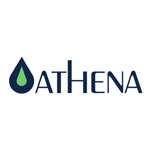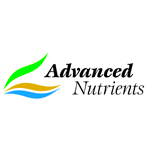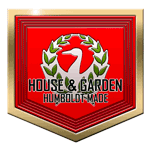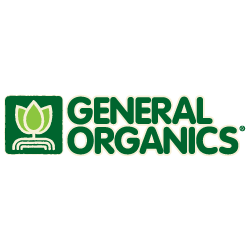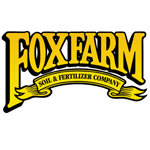Hydrobuilder.com has the largest selection of specialty plant growing nutrients & liquid fertilizer for indoor plants & outdoor plants alike. Whether you’re growing hydroponically or in soil containers, as a hobbyist or commercially, we have a complete nutrition line for your crop.
Each macro and micro nutrient is important for optimal plant growth and necessary to maximize yield! We have nutrient packages that provide a complete and balanced nutrition plan during the entire growth cycle as well as specialty micro nutrient plant fertilizers that can help you boost your plants health. Whether you need a rooting compound for cloning and seed propagation, cal-mag supplement, bat guano or bloom booster, Hydrobuilder.com has you covered.
The Basics Of Feeding Your Plant Growing Nutrients or Liquid Fertilizer
There are two main types of plant growing nutrients: Vegetation or ‘Grow’ and Flowering or ‘Bloom’ nutrients. These indoor plant fertilizers will have a different ratio of the NPK nutrients (primary nutes). This is because your plants need different ratios of these primary nutrients depending on whether you are in veg or flower. The three primary macronutrients are nitrogen, phosphorus, and potassium.
If you purchase a nutrient package, you'll get just about everything you need to take your plants from seed to harvest. But, you should continue reading to learn about other types of plant nutrients you may need in your garden.
Many growers will give a silica supplement throughout the plant’s life, even when growing in soil as the available amount in soil is in very minimal. Another super helpful supplement to keep on hand is Cal Mag. This is because calcium and magnesium deficiencies occur more frequently compared to micronutrients such as zinc, manganese, boron, etc. Some growers consider a cal-mag supplement a must for inert soilless mediums and treat their soilless media with it before planting. Calcium, magnesium, along with sulfur are known as the three secondary macronutrients.
How to feed liquid fertilizer for plants
One of the most common questions new growers have is how to actually feed liquid fertilizer for plants. You buy your grow nutrients, and then what? How often do you feed? How do you mix the nutrients? What do I do with the runoff?
Most companies provide feeding schedules along with their indoor plant fertilizer, which makes it as easy as possible. All you need to do is read the feeding chart, which will have set doses for each week of growth. This will be a good starting place, and it’s often advised to start at ¼ or ½ the recommended amount. You can always give more, and more growers accidentally overfeed their plants rather than underfeed. If you want to learn more about this, we have an entire article on how often you should give your plants nutrients in our learning center.
Furthermore, some plants will require more nutrients than others, and different growth phases require more or less. Don't make the mistake of thinking that as your plant grows, you need to continue increasing the nutrients. Often, you will bring your nutrient levels down in late flowering. In fact, many growers see their plants needing the most nutrients during the pre-flowering stage when the plant rapidly increasing its height within a very short time (1-2 weeks).
You don't need to start feeding seedlings until they develop a few sets of true leaves.
How to read plant nutrient labels - NPK ratio
The three primary macronutrients that you give your plants and the percentage they make up in a nutrient solution is called the NPK ratio or value. This stands for the percentage of nitrogen, phosphorus, and potassium in the bottle/solution. You will see a series of numbers (0-0-0) on the label that will show you that plant nutrient NPK value. Different ratios work best for different phases of growth, as you'll learn below.
Nitrogen – This nutrient will be in the highest amount in nutrient solutions designed for the vegetative state. Promotes chlorophyll production, vegetative growth, and healthy foliage.
Phosphorus – This plant nutrient will be in the highest amount in nutrient solutions designed for the flowering stage. Promotes the development of flowers, DNA/RNA synthesis, and strong roots.
Potassium – The percentage of potassium in nutrient solutions usually stays the same for all growth stages. However, some growers supply extra potassium, known as potassium silicate, because it’s a natural fungicide and will build a plant’s defense against insects and fungi. It will also create stronger stems which is good for holding the heavy weight late in flowering, and it can help fight heat stress even when temperatures are over 100° F.
Choosing the best NPK ratio for your plant
Companies will provide different NPK ratios they feel are best for specific growing stages and many professional growers have their own preferred ratio. New growers do not need to worry about this, however.
The best way to make sure your plants get the NPK ratio you need is to just stick to your feeding schedule. Don't try and mix and match your own nutrients at first, as it becomes really complicated really quickly. Just make sure your nutrient solution is high in nitrogen and low in phosphorus for the vegetative stage, and low in nitrogen and high in phosphorus for flowering.
Most likely, you’ll want to look into mixing plant nutrients when your plants are in the pre-flowering stage. High phosphorus is good for promoting a successful transition, but flowering indoor plant fertilizers are often too low in nitrogen, and it’s common to see leaves yellowing at the bottom of the plants. This is fine as long as the yellowing stays at the bottom, but some growers are uncomfortable with any yellowing.
You can find companies that sell nutrient solutions designed for the pre-flowering stage specific needs, which is great for beginners who are uncomfortable creating their own mix but want to avoid yellowing.
Understanding pH and PPM (Parts Per Million)
When watering your plants, whether with plant nutrients or not, you have to make sure the water is within the correct pH range. Indoor plant fertilizers will not be available for absorption unless it’s within a set pH range that’s dictated by your grow media. This is why it’s important to purchase a pH tester and pH adjustment solutions, commonly known as “pH up” and “pH down”.
Soil’s pH range is different than soilless and hydro mediums.
- Soil’s pH is range 6.0-7.0
- Soilless and hydro’s pH range is 5.5-6.5
PPM tells you how much “stuff” or minerals there is in your water. Pure water will be 0 ppm, but tap water will have a much higher number. Many growers use ppm as their unit of measurement when giving liquid fertilizer for plants. They will use a ppm meter to test the water going in and the water draining out – or in the case of hydroponics testing the water in the reservoir – and compare the two numbers to judge whether they should give their plants nutrients or not.
It’s important to calculate how much nutrients you are giving your plant because if you give too little you will cause deficiencies which may lead to stunted growth and even plant death. Many growers give too much and this can burn the plants or cause nutrient lockout where one nutrient is blocking another from being absorbed.
If you want to learn more about plant nutrition, check out our complete guide on Nutrients and pH in our learning center. This is the most comprehensive guide on the internet, and will have you feeling like an expert grower by the time you finish reading it. We also have a ton of other helpful plant nutrient articles there, so spend some time learning today and become the best grower you can.
Which Plant Growing Nutrients Are Right For Me?
Hydrobuilder is your one-stop shop for all things plant nutrients. We offer both organic and synthetic grow nutrients kits from top brands, supplements and additives to give your plants a major boost, and measuring and testing supplies that will make sure you’re always giving your plants the proper amount of nutrients.
The Different Categories Of Liquid Fertilizer For Plants
Nutrient Packages – Eliminate the headache associated with figuring out which liquid fertilizer for plants you need, and when, with our complete nutrient packages. For each of the packages, we let you choose the size and quantity of the various bottles. Do you like five out of six of the bottles in a package? No problem, just remove the sixth! Need a bigger bottle of flowering nutrients since you use more of those? You can easily make that happen.
Soil and Soilless Mix Nutrients – Here you can find the best nutrients for growing in soil and soilless mediums such as coco coir. Because coco tends to suck up calcium, these will tend to have more Cal in them to counter this out.
Hydroponic System Nutrients – When growing in a hydroponic system, the nutrients are more easily absorbed and available, and this can mean fantastic plants whose growth and development is unrivaled. But it also means that you can more easily overdo it and give too much. That’s why we offer hydroponic nutrients from the top dogs who design their liquid fertilizer for plants with hydro in mind.
Compost Tea – Increase plant growth, provide beneficial organisms, replace toxic chemicals, and suppress diseases with compost tea. Compost tea is a liquid fertilizer that is created by soaking compost in water which then can be applied in multiple ways. We offer the ingredients to make your own, as well as pre-brewed teas that are ready to use of out the box.
What Are The Best Plant Growing Nutrients Of The Year?
There are so many different indoor plant fertilizer options available that it can get incredibly overwhelming, especially when shopping for a complete package.
Even with a good understanding of plant nutrition, how do you decide which grow nutrients kit is right for you and your plants?
Luckily for you, we took it upon ourselves to come up with a complete list of the top liquid fertilizers for plants.
Whether you are looking for organic fertilizer for plants or you need hydroponics fertilizers, we have something for you! This is the #1 buying guide for liquid nutrients for plants, so head over to our blog and check it out!




